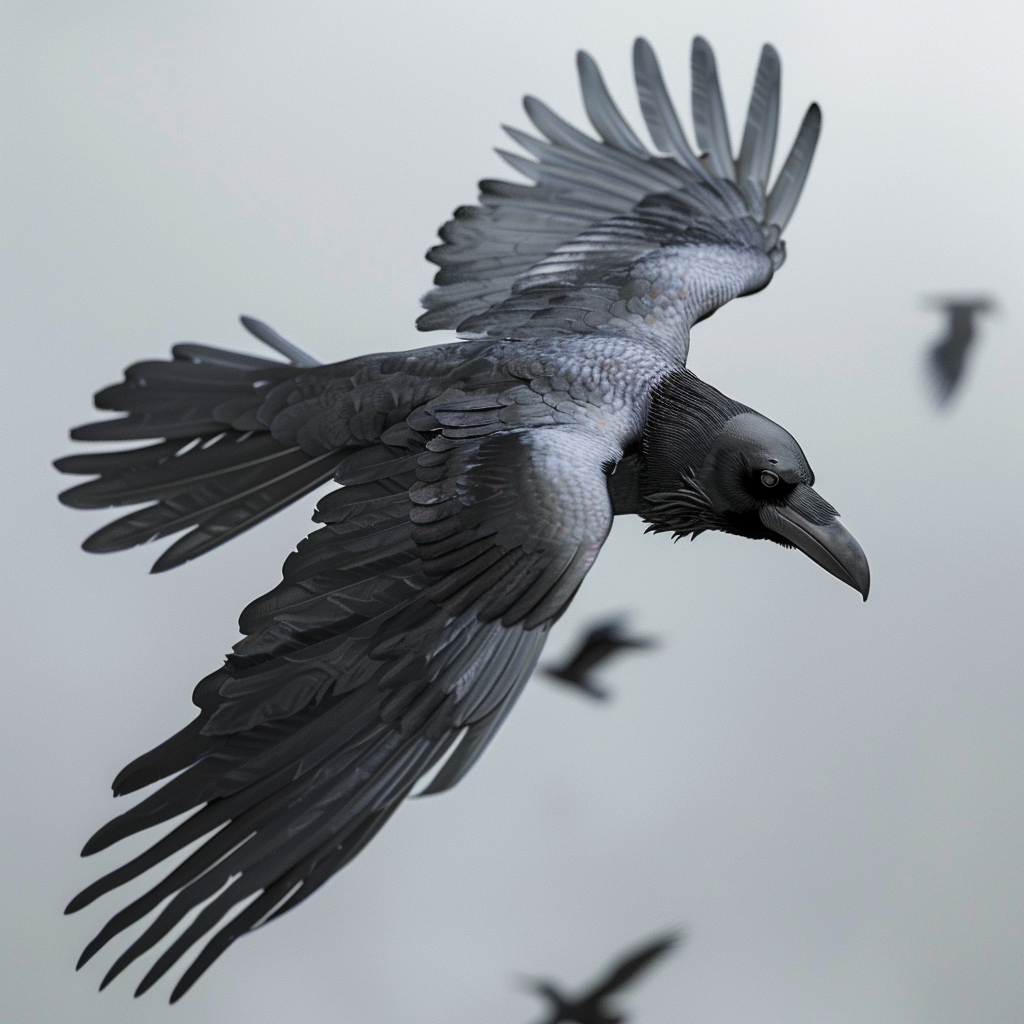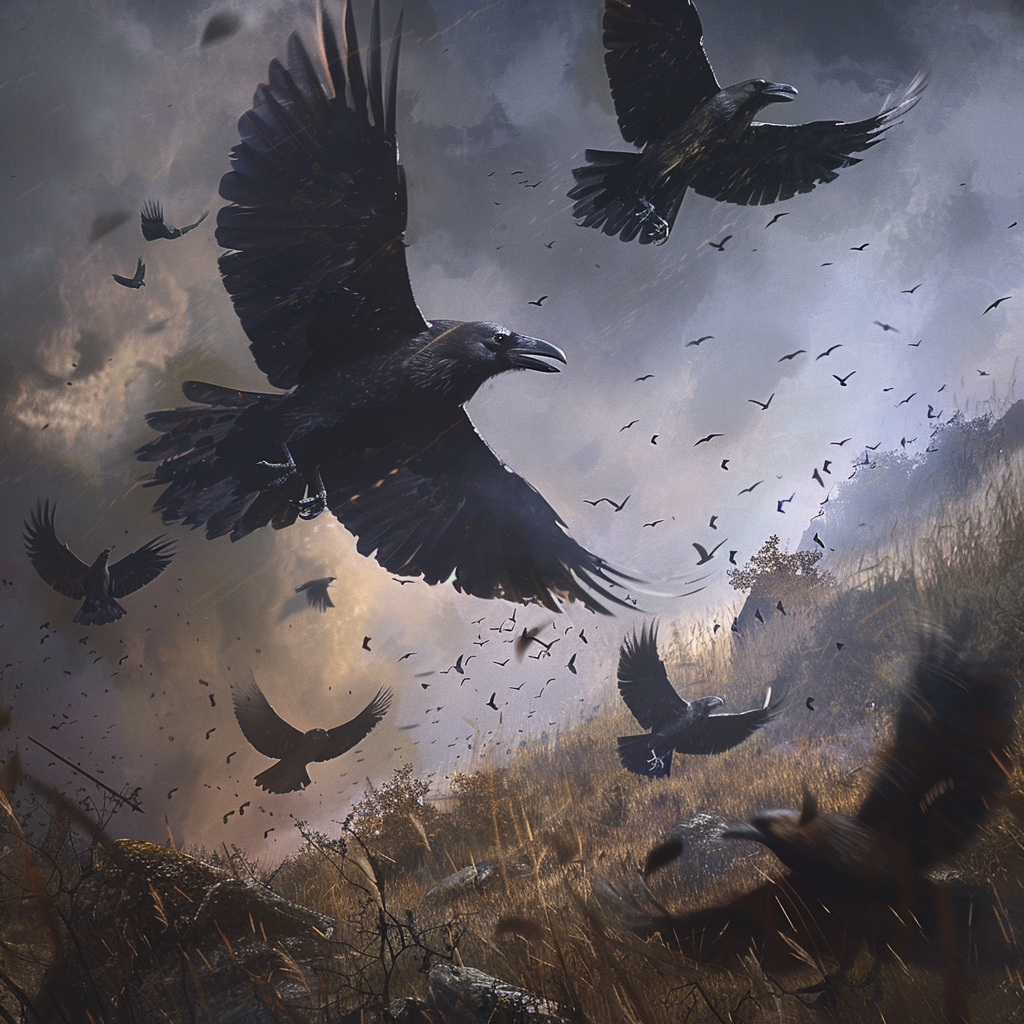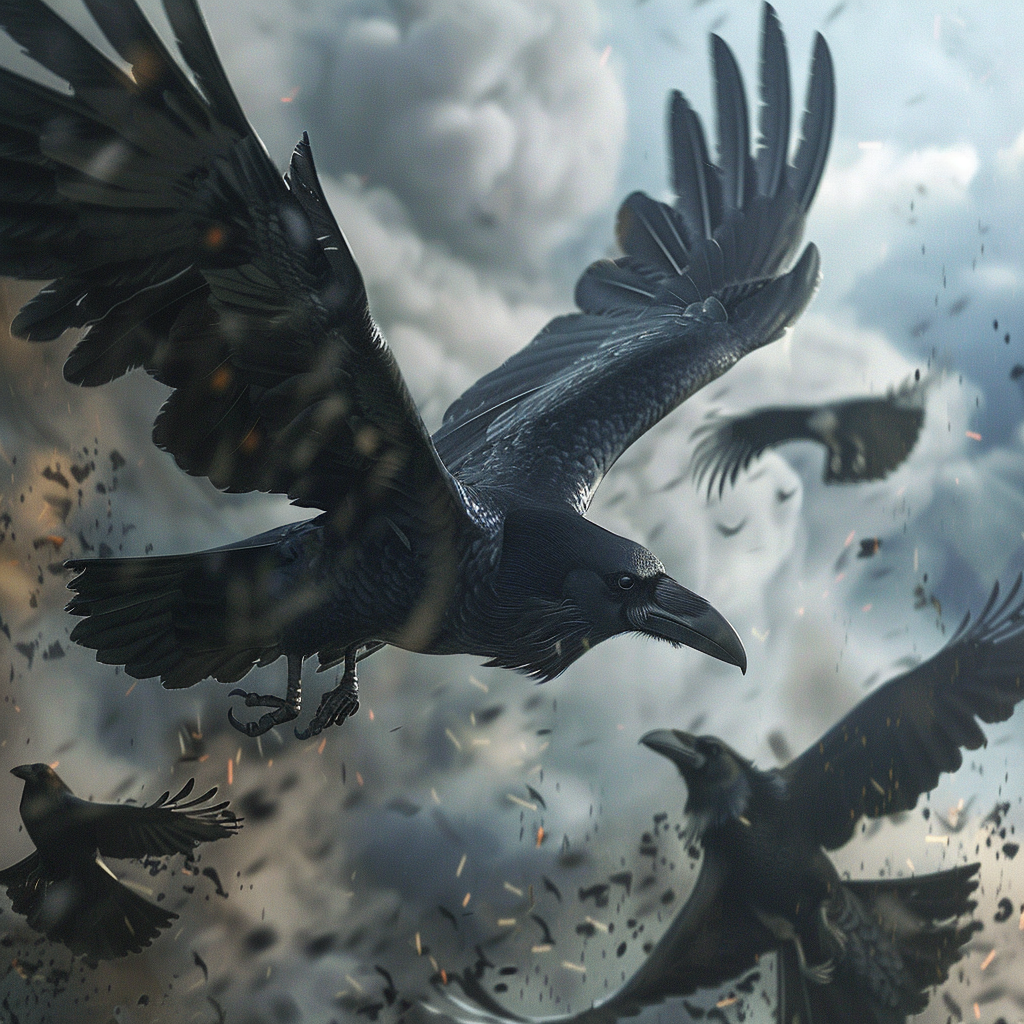In addition to Odin’s ravens, Huginn and Muninn, there are other mentions of ravens in Norse mythology, though they might not be as prominent. Here are a few examples:While Huginn and Muninn are the most famous ravens in Norse mythology due to their association with Odin, ravens as symbols or characters may appear in other contexts within Norse lore, contributing to the rich tapestry of mythological imagery and storytelling in the Norse.
Ravens as Companions of Valkyries: In some accounts, ravens are said to accompany Valkyries, the warrior maidens who choose those slain in battle to be taken to Valhalla, the hall of Odin. These ravens may serve similar functions to Odin’s ravens, scouting battlefields and bringing news to the Valkyries or Odin himself.
Ravens in Prophetic and Poetic Contexts: Ravens are occasionally referenced in Norse poetry and literature, often in a symbolic or metaphorical sense. For example, they may appear in prophetic visions or as symbols of impending doom or significant events.
Ravens in Folklore: In Norse folklore, ravens may feature in various stories and tales, sometimes as magical or mystical beings. They might be depicted as tricksters or shape-shifters, capable of assuming human form or influencing events in the mortal realm.
Battlefield Symbolism: Ravens are frequently present on the battlefield in Norse mythology, scavenging on the remains of the fallen warriors. They are seen as birds of battle and death, symbolizing the aftermath of conflict.
Gunnar’s Ravens: In the Volsunga Saga, a legendary saga from Norse mythology, there is a mention of ravens associated with the hero Gunnar. When Gunnar is thrown into a pit of snakes as part of his execution, two ravens fly overhead, and it’s interpreted as a sign of his impending death.



